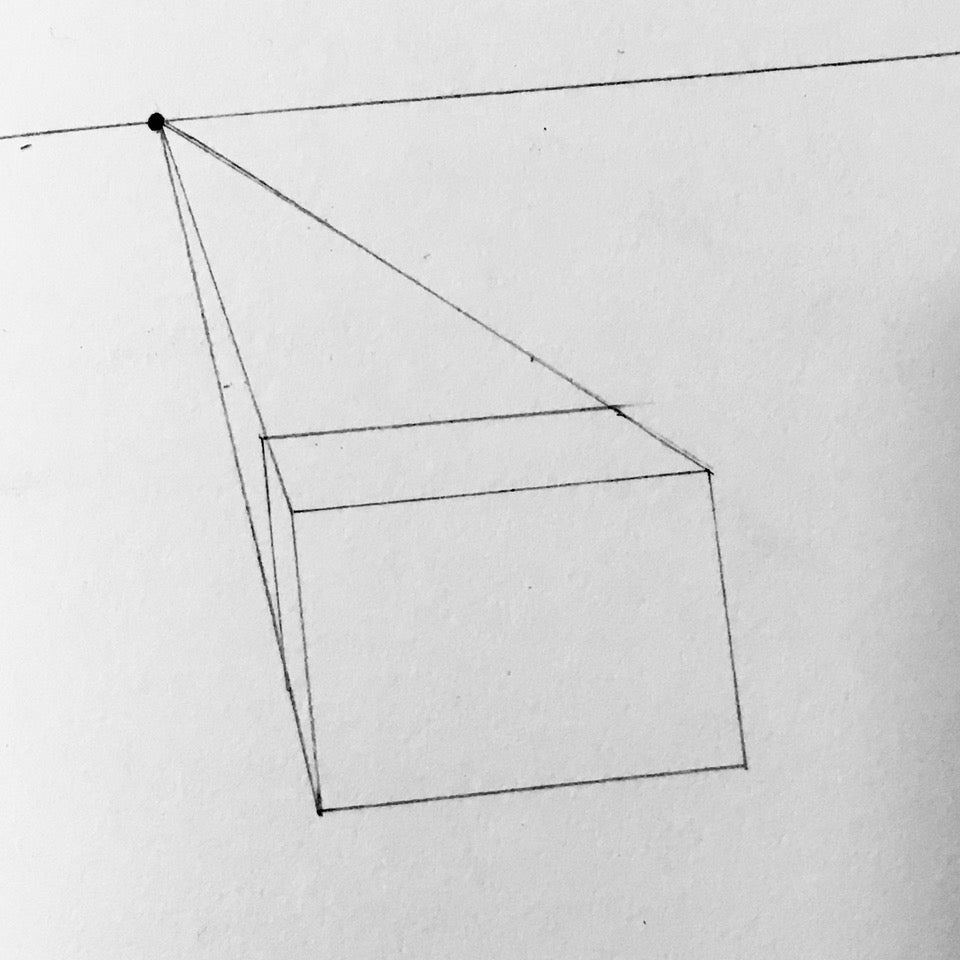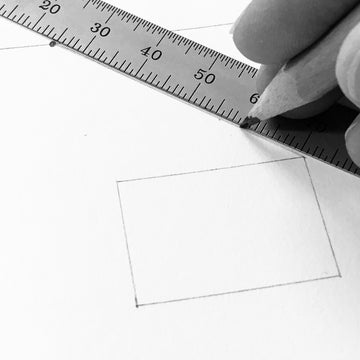Linear perspective intimidates many people because they see the rulers and grids and then assume it’s going to feel like their Grade 10 geometry class.
Now, I have had to read books on a linear perspective that felt like my Grade 10 geometry class, but the basics of linear perspective that you need for 99% of real situations are as easy as riding a bicycle (or easier if you’re clumsy like me).
For this introduction, we’re going to start with one-point perspective because that’s got the least moving parts.
You don’t have to do anything fancy to start getting a realistic perspective right away! 
The line across the paper here is the horizon, and by that, I mean the literal horizon. Imagine the area below the line being a field and the area above the line in the sky.
The position of the horizon is always whatever your eye level is, so when you put the horizon into the drawing it’s important to consider what eye level you want the viewer to be looking from.
The dot on the horizon is the vanishing point. Think of the vanishing point as the target of your gaze - objects in space appear to recede to the point, and the point moves around depending on where you are looking.
Try holding up a box and moving the box without moving your eyes, and you’ll see how the vanishing point didn’t move. Then set the box on the table and walk around it.
The box isn’t moving but the vanishing point sure is because you’re not keeping your gaze or eye-level consistent.

Now that you have your horizon and vanishing point, it’s time to draw. Get a ruler and any other drafting tools you may need to draw a rectangle precisely.

It is now time to turn the rectangle into a box. Connect the ruler to the vanishing point and to each corner of the rectangle and trace the lines.

Add vertical lines for the back of the box and it will look something like this.

The box is boring. It can be confusing to understand how you supposedly need linear perspective, but every interesting picture you’ve ever seen didn’t look like it was drawn with a ruler.
The secret is to draw freehand over the basic boxes to make the picture more organic. Here I’ve had some fun with my fountain pen - the resulting drawing isn’t too pretty but it’s more interesting than a plain box.
The perspective may not be as precise after you’ve done a freehand drawing with more details, but the as long as nothing’s wrong it’s okay if it’s not precise.
I hope I’ve made one-point perspective a bit less intimidating for you!
Ready to take it to the next level? Learn more about the other types of perspectives in our Introduction to Perspectives blog!


